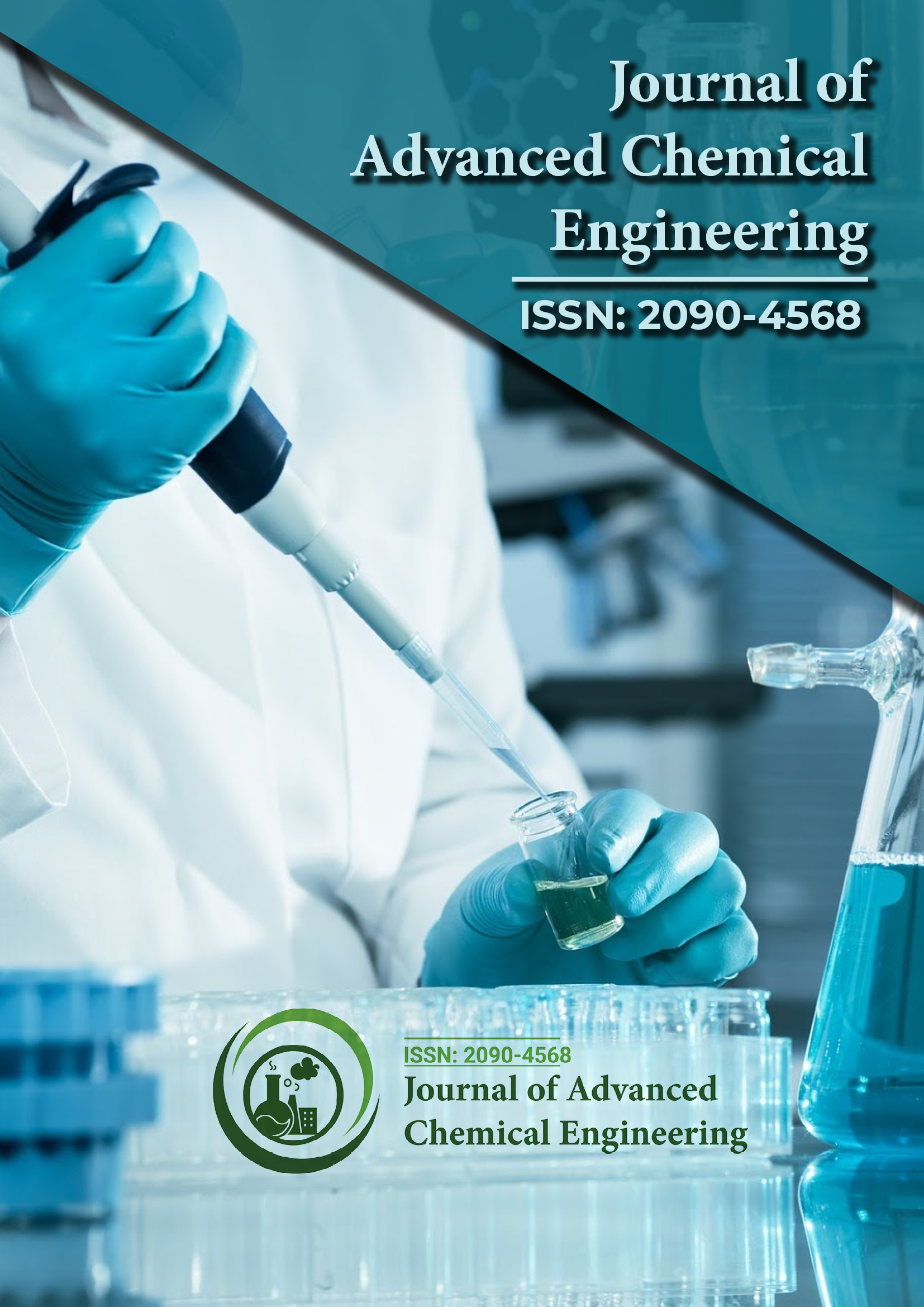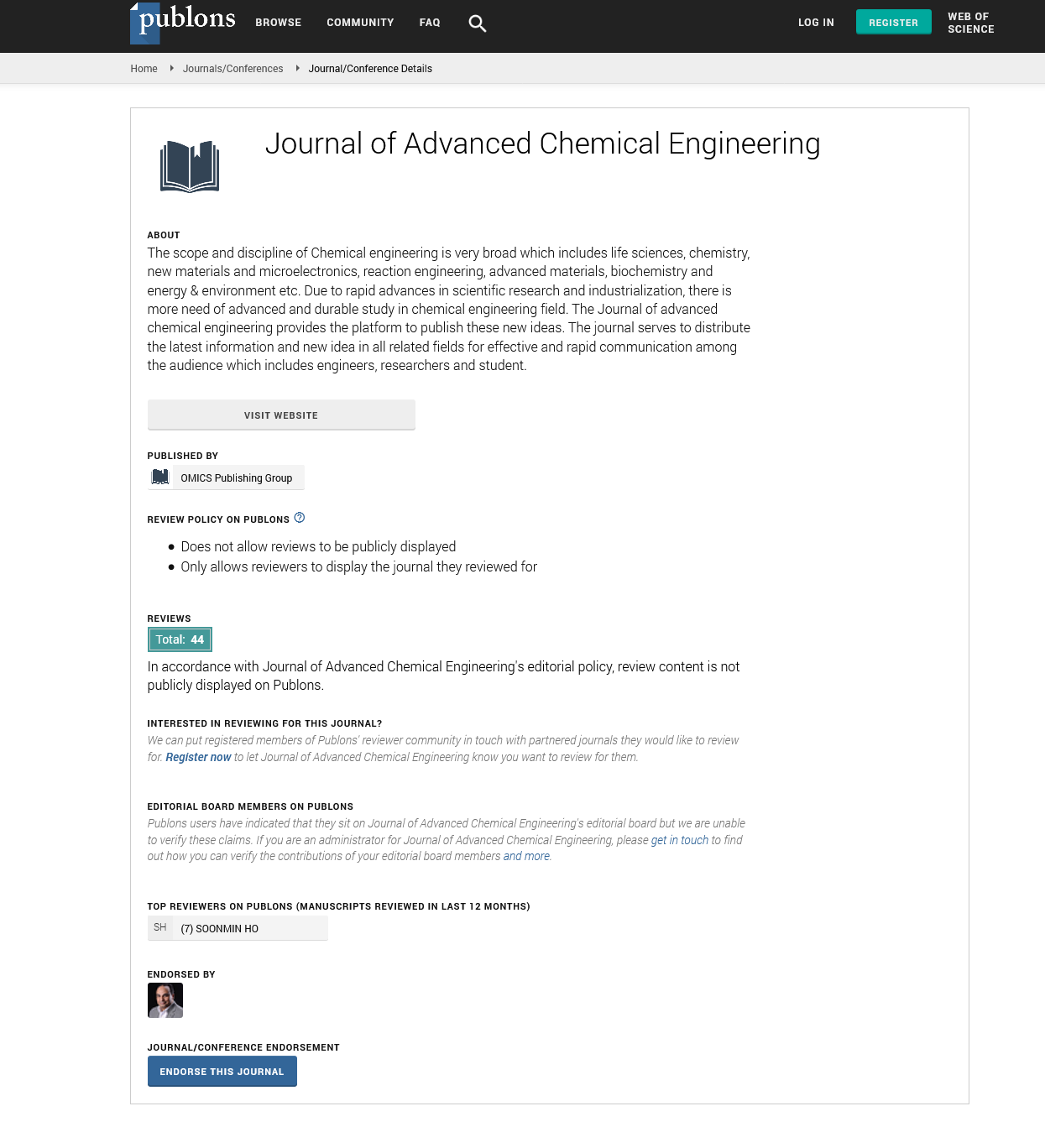Indexed In
- Open J Gate
- Genamics JournalSeek
- Smithers Rapra
- RefSeek
- Directory of Research Journal Indexing (DRJI)
- Hamdard University
- EBSCO A-Z
- OCLC- WorldCat
- Scholarsteer
- Publons
- Geneva Foundation for Medical Education and Research
- Google Scholar
Useful Links
Share This Page
Journal Flyer

Open Access Journals
- Agri and Aquaculture
- Biochemistry
- Bioinformatics & Systems Biology
- Business & Management
- Chemistry
- Clinical Sciences
- Engineering
- Food & Nutrition
- General Science
- Genetics & Molecular Biology
- Immunology & Microbiology
- Medical Sciences
- Neuroscience & Psychology
- Nursing & Health Care
- Pharmaceutical Sciences
Opinion Article - (2024) Volume 14, Issue 4
Challenges in Optimizing High Gravity Processes for Advanced Applications
Andrew Johnson*Received: 28-Nov-2024, Manuscript No. ACE-24-28359; Editor assigned: 02-Dec-2024, Pre QC No. ACE-24-28359 (PQ); Reviewed: 16-Dec-2024, QC No. ACE-24-28359; Revised: 23-Dec-2024, Manuscript No. ACE-24-28359 (R); Published: 30-Dec-2024, DOI: 10.35248/2090-4568.24.14.351
Description
The synthesis of monodispersed inorganic nanoparticles has revolutionized material science, enabling the development of advanced materials with precise properties for a wide range of applications, from catalysis to medicine. High gravity technology, a novel approach employing Rotating Packed Bed (RPB) reactors, has emerged as a powerful method for synthesizing such nanoparticles. This technology leverages intensified mass and heat transfer under high-gravity fields to overcome limitations of traditional synthesis techniques, offering remarkable advantages in producing nanoparticles with exceptional uniformity, tunable size and superior functionality.
High gravity technology addresses the critical challenges associated with conventional methods, such as sol-gel, hydrothermal and chemical reduction, which often result in heterogeneous particle sizes and distributions due to suboptimal mixing and mass transfer. The RPB reactors employed in high gravity synthesis generate centrifugal forces that create highly efficient mixing zones, ensuring uniform reactant distribution and reducing the time required for nucleation and growth. This controlled environment facilitates the synthesis of nanoparticles with consistent size and morphology, a prerequisite for applications demanding high precision, such as drug delivery and optoelectronics.
Moreover, the scalability of high gravity technology sets it apart as an industrially viable solution for nanoparticle synthesis. Traditional batch processes struggle to meet the demand for high-throughput production due to their inherent inefficiencies and limited control over reaction conditions. High gravity technology, by contrast, enables continuous operation with precise control over key parameters such as temperature, reactant concentration and residence time. This scalability not only reduces production costs but also ensures reproducibility, a critical factor for commercial applications.
The multifunctionality of inorganic nanoparticles synthesized using high gravity technology is another noteworthy advantage. By carefully selecting precursor materials and tailoring reaction conditions, nanoparticles with diverse properties can be engineered. For instance, metal oxides such as Titanium Dioxide (TiO₂) and Zinc Oxide (ZnO) synthesized in RPB reactors exhibit enhanced photocatalytic activity, making them ideal for environmental remediation and solar energy applications. Similarly, magnetic nanoparticles produced via high gravity technology have found extensive use in medical imaging, hyperthermia therapy and targeted drug delivery. The precision and versatility of this method enable the customization of nanoparticles to meet the unique requirements of various industries.
Despite its numerous advantages, high gravity technology is not without challenges. The optimization of RPB reactors for specific reactions remains a complex task, requiring a deep understanding of fluid dynamics, reaction kinetics and material properties. Additionally, the synthesis of hybrid or doped nanoparticles, which often involve multiple steps and interactions, demands further refinement of this technology to maintain the desired level of control and uniformity. Addressing these challenges will require concerted efforts in research and development, alongside advancements in reactor design and process modeling.
Another area of potential improvement lies in the environmental sustainability of high gravity nanoparticle synthesis. While the method itself is efficient, the use of toxic precursors and solvents in some reactions raises concerns about its environmental impact. Future research should prioritize the integration of green chemistry principles into high gravity processes, such as employing eco-friendly precursors, minimizing waste generation and exploring renewable energy sources to power the reactors.
In conclusion, high gravity technology represents a transformative approach to the synthesis of monodispersed inorganic nanoparticles, providing unparalleled control, scalability and multifunctionality. Its ability to produce uniform nanoparticles with tailored properties opens up new possibilities across diverse fields, from catalysis and energy storage to biomedicine and environmental science. While challenges remain in optimizing reactor design, broadening the scope of synthesized materials and enhancing sustainability, the potential of high gravity technology to redefine nanoparticle synthesis is undeniable.
Citation: Johnson A (2024). Challenges in Optimizing High Gravity Processes for Advanced Applications. Adv Chem Eng. 14:351.
Copyright: © 2024 Johnson A. This is an open access article distributed under the terms of the Creative Commons Attribution License, which permits unrestricted use, distribution, and reproduction in any medium, provided the original author and source are credited.

